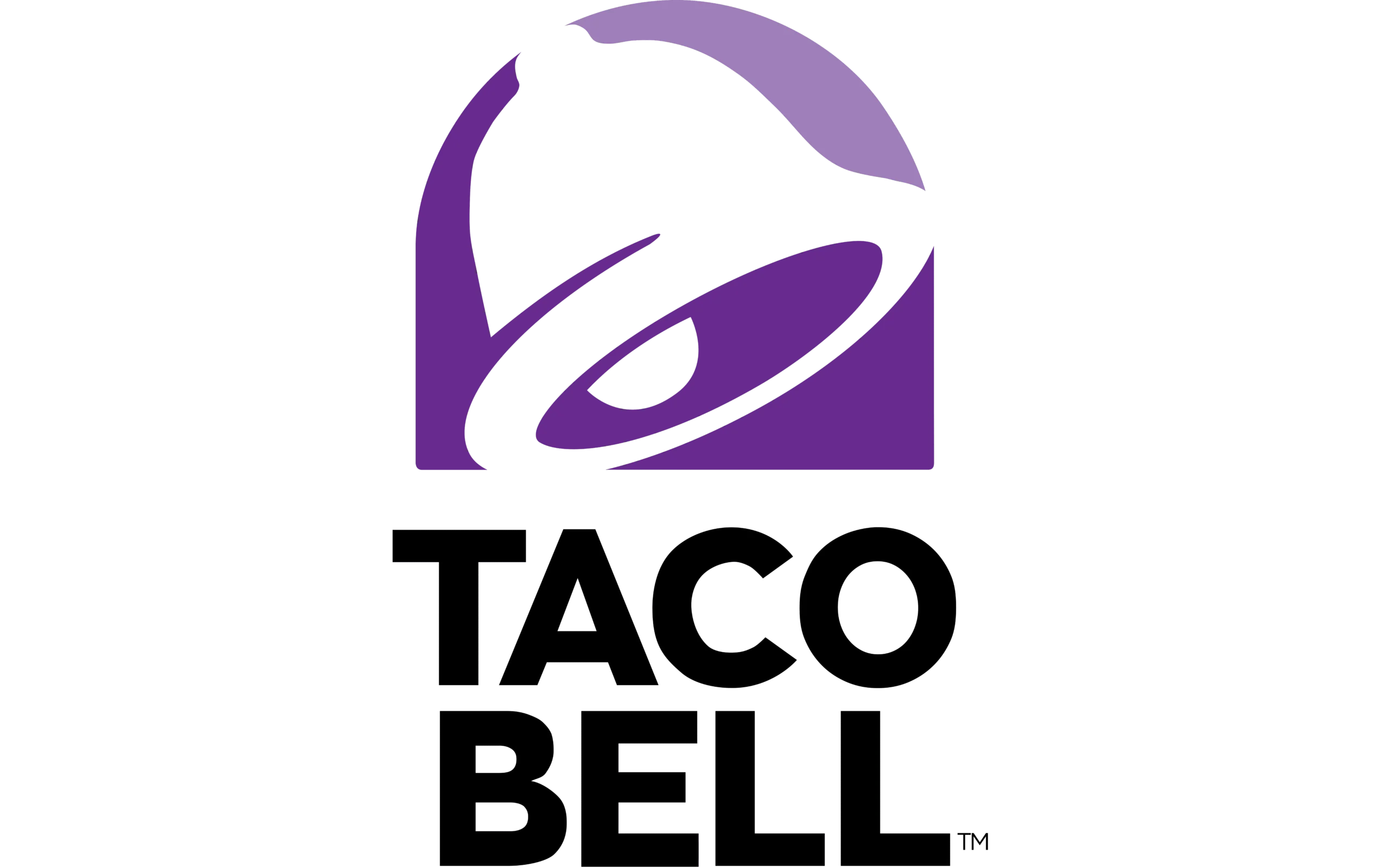
Taco Bell isn’t just a fast-food favorite—it’s a cultural icon with a spicy history and a bold personality. From humble beginnings in a small California town to becoming a global powerhouse serving billions of tacos each year, Taco Bell has carved out a unique place in the world of quick-service dining. Whether you’re a die-hard fan of the Doritos Locos Taco or just curious about how a taco-themed wedding works, this list dives deep into the most fascinating, surprising, and record-breaking facts about the brand. Packed with verified dates, figures, and trivia, these 25 entries will give you a whole new appreciation for the Bell.
1. Taco Bell was founded on July 6, 1962, by Glen Bell in Downey, California. Glen Bell had previously operated a hot dog stand and a taco stand called Taco Tia before launching Taco Bell. The first Taco Bell restaurant was a small building with a walk-up window and no indoor seating. This marked the beginning of what would become one of the most iconic fast-food chains in the United States. The brand’s focus on Mexican-inspired cuisine quickly gained popularity, setting the stage for rapid expansion.
2. The original Taco Bell menu featured items priced at just $0.19 each, making it highly affordable for customers in the early 1960s. These items included tacos, burritos, frijoles (beans), tostadas, and chiliburgers. This low-cost menu was a strategic move by Glen Bell to attract customers and differentiate Taco Bell from other fast-food chains. The pricing helped establish Taco Bell as a go-to destination for budget-friendly Mexican-style food.
3. The first Taco Bell franchisee was Kermit Bekke, a retired police officer, who opened his location in 1964. This marked the beginning of Taco Bell’s franchising model, which would become a key driver of its growth. Bekke’s success as a franchisee demonstrated the viability of the Taco Bell business model and encouraged others to invest in the brand. Franchising allowed Taco Bell to expand rapidly across the United States.
4. Taco Bell went public in 1970 with 325 restaurants, signaling its emergence as a major player in the fast-food industry. The public offering provided the company with the capital needed to accelerate its expansion and invest in marketing and infrastructure. By becoming a publicly traded company, Taco Bell gained increased visibility and credibility, attracting more franchisees and customers.
5. PepsiCo acquired Taco Bell in 1978, integrating it into its portfolio of food and beverage brands. This acquisition provided Taco Bell with access to PepsiCo’s vast resources, including marketing expertise and distribution networks. In 2002, PepsiCo spun off its restaurant division, including Taco Bell, into a new company called Yum! Brands. This move allowed Taco Bell to operate with greater autonomy while benefiting from the support of a large parent company.
6. As of 2023, Taco Bell operates 8,218 restaurants worldwide, reflecting its status as a global fast-food powerhouse. The brand’s international presence has grown steadily over the years, with locations in North America, Europe, Asia, and beyond. Taco Bell’s ability to adapt its menu to local tastes has contributed to its success in diverse markets.
7. Taco Bell is present in 31 countries, including Canada, India, the United Kingdom, and Australia. The brand’s international expansion strategy focuses on partnering with local franchisees and customizing offerings to suit regional preferences. This global footprint underscores Taco Bell’s appeal across cultures and its commitment to becoming a worldwide leader in Mexican-inspired fast food.
8. The first Taco Bell in Canada opened in 1979 in Windsor, Ontario. This marked the beginning of Taco Bell’s international journey and demonstrated its potential to succeed outside the United States. The Canadian market has since become an important part of Taco Bell’s North American operations, with numerous locations across the country.
9. As of 2022, 94% of Taco Bell restaurants are franchised, highlighting the importance of franchise partnerships in the brand’s business model. Franchising allows Taco Bell to expand rapidly while maintaining consistent quality and customer experience. Franchisees benefit from the brand’s strong reputation, marketing support, and operational guidance.
10. Taco Bell serves over 2 billion customers annually, a testament to its widespread popularity and customer loyalty. The brand’s ability to attract such a large customer base is driven by its diverse menu, affordable pricing, and innovative marketing campaigns. Taco Bell’s focus on customer engagement and satisfaction has helped it maintain a strong presence in the competitive fast-food industry.
11. Taco Bell’s 2023 revenue was $15.9 billion, up from $14.653 billion in 2022. This impressive financial performance reflects the brand’s continued growth and success in both domestic and international markets. Revenue growth is fueled by new product launches, digital ordering innovations, and strategic partnerships. Taco Bell’s strong financials position it well for future expansion.
12. The brand sees an average of 40 million customers weekly, indicating its massive reach and popularity. This high customer volume is supported by Taco Bell’s extensive network of restaurants and its ability to cater to a wide range of tastes and preferences. The brand’s emphasis on convenience, speed, and value contributes to its strong customer traffic.
13. Taco Bell was named one of TIME’s 100 Most Influential Companies in 2023, recognizing its impact on the food industry and popular culture. This accolade highlights Taco Bell’s innovation, leadership, and ability to shape consumer trends. The brand’s influence extends beyond food, encompassing fashion, entertainment, and social media.
14. Taco Bell was featured in Fast Company’s Most Innovative Companies in both 2023 and 2024, underscoring its commitment to creativity and progress. The brand is known for its bold product launches, such as the Doritos Locos Taco, and its willingness to experiment with new concepts. Taco Bell’s innovation strategy includes leveraging technology and customer feedback to drive continuous improvement.
15. The Doritos Locos Taco, launched in 2012, sold over 1 billion units within its first year, making it one of the most successful product launches in fast-food history. This collaboration with Frito-Lay combined Taco Bell’s taco shell with the flavor of Doritos, creating a unique and highly popular item. The success of the Doritos Locos Taco demonstrated the power of brand partnerships and customer-driven innovation.
16. Taco Bell introduced a breakfast menu in 2015, expanding its offerings to include items like the Breakfast Crunchwrap, breakfast burritos, and hash browns. This move allowed Taco Bell to compete in the lucrative breakfast segment and attract morning customers. The breakfast menu has been well-received and continues to evolve based on customer preferences.
17. The Bell Beefer, a taco-meat burger, was introduced in the 1970s and discontinued in the 1990s. This unique item featured seasoned ground beef served on a hamburger bun, offering a fusion of taco and burger flavors. Although it was eventually removed from the menu, the Bell Beefer remains a nostalgic favorite among longtime Taco Bell fans.
18. Taco Bell’s Cantina locations serve alcohol and feature upscale décor, offering a more modern and urban dining experience. The first Cantina opened in Las Vegas and includes features like open kitchens, digital menu boards, and exclusive menu items. Cantina locations are designed to appeal to younger, urban customers seeking a more social and stylish atmosphere.
19. The Las Vegas Cantina offers a $600 wedding package, which includes a ceremony, reception, and Taco Bell-themed merchandise. Couples can get married inside the restaurant, complete with a chapel and officiant. This unique offering has attracted media attention and showcases Taco Bell’s playful and unconventional brand personality.
20. The famous Taco Bell Chihuahua, Gidget, starred in advertisements from 1997 to 2000 and became a cultural icon. Known for the catchphrase “¡Yo quiero Taco Bell!”, Gidget helped boost brand recognition and appeal. She later appeared in the film Legally Blonde 2, further cementing her status as a beloved mascot.
21. Gidget passed away in 2009 at the age of 15, marking the end of an era for Taco Bell’s advertising history. Her legacy lives on through nostalgic memories and continued references in pop culture. Gidget’s role in Taco Bell’s marketing campaign remains one of the most memorable in fast-food history.
22. Taco Bell sponsored the first-ever X Games in 1995, aligning the brand with youth culture and extreme sports. This sponsorship helped Taco Bell connect with a younger demographic and reinforce its image as a fun and adventurous brand. The partnership with the X Games demonstrated Taco Bell’s commitment to engaging with contemporary trends.
23. In 2017, Taco Bell partnered with Forever 21 to launch a fashion line celebrating its 60th anniversary. The collection included clothing and accessories inspired by Taco Bell’s branding and menu items. This collaboration showcased Taco Bell’s influence beyond food and its ability to resonate with fashion-conscious consumers.
24. The original Taco Bell building, known as “Taco Bell Numero Uno,” was relocated to the company’s headquarters in Irvine, California. This preservation effort honors the brand’s history and serves as a symbol of its humble beginnings. The building is now a cherished landmark and a reminder of Taco Bell’s journey from a small stand to a global chain.
25. Taco Bell’s signature seasoning blend includes cumin, garlic, and paprika, contributing to its distinctive flavor profile. This blend is used in many of the brand’s menu items and is a key component of its culinary identity. The seasoning mix reflects Taco Bell’s commitment to bold and flavorful food.
Frequently Asked Questions about Taco Bell:
1. What kind of food does Taco Bell offer?
Taco Bell specializes in Mexican-inspired fast food, including tacos, burritos, quesadillas, nachos, and specialty items like the Crunchwrap Supreme and Doritos Locos Tacos. The menu also features customizable options, allowing customers to choose from various proteins (beef, chicken, steak), vegetarian alternatives (black beans, rice, potatoes), and sauces ranging from mild to fire.
2. Does Taco Bell offer vegetarian or vegan options?
Yes, Taco Bell is known for its vegetarian-friendly menu. Many items can be customized by substituting meat with beans or potatoes. Vegan options are also available by removing dairy products and using certified vegan ingredients like black beans, seasoned rice, and guacamole. Taco Bell is certified by the American Vegetarian Association (AVA).
3. Where was Taco Bell founded?
Taco Bell was founded in Downey, California on March 21, 1962 by Glen Bell. Before launching Taco Bell, Glen operated a hamburger stand called Bell’s Hamburgers and later a taco stand named Taco Tia. His vision was to bring Mexican-style food to a broader American audience.
4. How can I find a Taco Bell near me?
To locate a nearby Taco Bell, visit tacobell.com/locations and enter your city, state, or ZIP code. The site provides directions, hours of operation, and services offered (e.g., drive-thru, dine-in, delivery).
5. What is Taco Bell’s most popular menu item?
The Doritos Locos Taco is one of Taco Bell’s most popular and successful items, selling over 1 billion units in its first year after launching in 2012. Other fan favorites include the Crunchwrap Supreme, Cheesy Gordita Crunch, and Chalupa Supreme.
6. What is Taco Bell’s seasoned beef made of?
Taco Bell’s seasoned beef is made from 100% USDA-inspected beef, cooked with a proprietary blend of seasonings including cumin, garlic, onion powder, and paprika. It contains added water and oats to maintain texture and moisture, and meets all FDA and USDA standards.
7. Are there gluten-free options at Taco Bell?
While Taco Bell does not offer certified gluten-free items, some menu items may be suitable for those avoiding gluten, such as the Power Bowl without rice or tortillas. However, cross-contamination is possible, so customers with celiac disease should exercise caution.
8. How do I apply for a job at Taco Bell?
You can apply online at careers.tacobell.com or inquire in person at a local restaurant. Positions range from Team Member to Restaurant General Manager. The application process typically includes an online form, interview, and onboarding.
9. What is the minimum age to work at Taco Bell?
The minimum age to work at Taco Bell is typically 16 years old, although some positions or locations may require applicants to be 18 or older, especially for roles involving equipment or late-night shifts.
10. What are the benefits of working at Taco Bell?
Taco Bell offers competitive wages, flexible scheduling, employee discounts, career development opportunities, and a fun work environment. Full-time employees may receive benefits such as health insurance, paid time off, and retirement plans.
11. How do I get a refund from Taco Bell?
Refunds are handled by the restaurant where the purchase was made. If you ordered through the Taco Bell app or website, you can contact customer support via help.tacobell.com or call their hotline. For third-party delivery apps, contact the respective service (e.g., Uber Eats, DoorDash).
12. Does Taco Bell offer senior discounts?
Some Taco Bell locations offer senior discounts, typically around 5–10% off or a free drink with purchase. These discounts vary by location and are not part of a nationwide policy, so it’s best to ask at your local restaurant.
13. What are Taco Bell’s hours of operation?
Most Taco Bell locations are open from 7 AM to 1 AM, with some operating 24 hours, especially in urban areas. Hours may vary by location, so check online or call ahead.
14. Does Taco Bell have a rewards program?
Yes, Taco Bell offers a Rewards Program through its mobile app. Members earn points for purchases, unlock exclusive offers, and receive perks like Tuesday Drops and birthday rewards. Tiers include “Hot,” “Fire,” and “Diablo,” each offering increasing benefits.
15. Can I customize my order at Taco Bell?
Absolutely. Taco Bell is known for its customizable menu. You can add or remove ingredients, choose different proteins, swap sauces, and adjust spice levels. The app and website make customization easy during online ordering.
16. What is Taco Bell’s wedding package?
Taco Bell’s Las Vegas Cantina offers a $600 wedding package, which includes a ceremony, officiant, Taco Bell-themed merchandise, and a catered reception with food and drinks. It’s a quirky and fun option for fans of the brand.
17. Why did Taco Bell discontinue the Taco Salad?
The Taco Salad was discontinued due to low demand and operational complexity. It required special packaging and ingredients not used in other menu items, making it inefficient to produce. Fans continue to request its return.
18. Who is the CEO of Taco Bell?
As of the latest update, Sean Tresvant is the CEO of Taco Bell. He took over the role in 2023, bringing experience in brand strategy and innovation from his previous roles at Nike and Yum! Brands.
19. What does Taco Bell stand for?
Taco Bell stands for bold innovation, affordability, and fun. Its mission is to “feed people’s lives with más,” emphasizing creativity, flavor, and customer engagement. The brand is known for pushing boundaries in fast food.
20. What was the first item sold at Taco Bell?
The first menu items sold at Taco Bell in 1962 included tacos, burritos, frijoles, tostadas, and chiliburgers, each priced at $0.19. These simple offerings laid the foundation for the brand’s future success.









